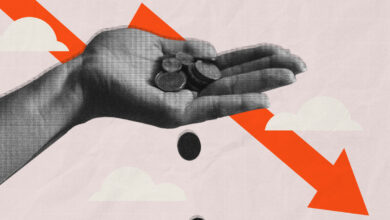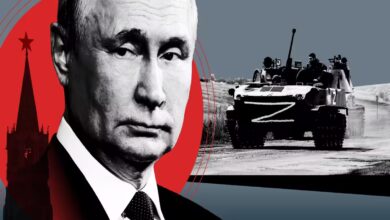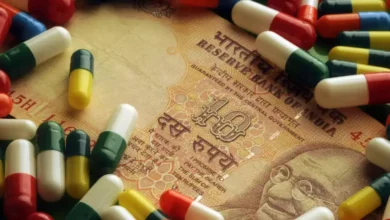Bangladesh has reached out to the IMF for help: what’s wrong with the country’s economy?
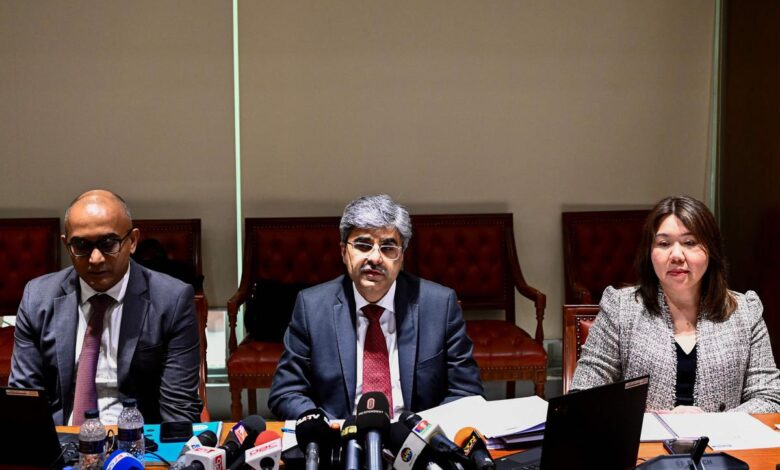
Bangladesh grew significantly during the pandemic and continues to do so. The issue has been the Ukraine war, which has hurt Bangladesh’s exports as demand in the West has declined, as well as the country’s forex reserves.
Last month, Bangladesh requested assistance from the International Monetary Fund (IMF). According to an IMF press release, and Bangladesh will receive $4.5 billion in economic assistance (around moreover Rs 37,000 crore).
This is a main significant reversal for an economy that surpassed India’s per capita income in 2020 as a result of robust economic growth over the last two decades, particularly since 2017.
The main opposition party, and the Bangladesh Nationalist Party (BNP), has also organised several protest rallies across the country to capitalise on the growing economic distress. It aims to encircle the Awami League government and also its leader, Prime Minister Sheikh Hasina, who has also dominated Bangladeshi politics for more than a decade.
What exactly is the issue with Bangladesh’s economy?
Bangladesh’s GDP growth rate remains very impressive. For one thing, unlike many other countries, including India, where GDP contracted in 2020 as a result of the Covid-19 pandemic, Bangladesh’s economy grew during this period. In 2020, its GDP increased by 3.4%, 6.9% in 2021, and 7.2% in 2022.
Bangladesh’s problems, on the other hand, are elsewhere. According to the IMF, “Bangladesh’s robust economic recovery from the main pandemic has been interrupted by current Russia’s war in Ukraine, resulting in a sharp widening of the current account deficit, and rapid decline of foreign exchange reserves, and rising inflation, and slowing growth.”
In other words, while Bangladesh’s economy has grown rapidly, Russia’s invasion of Ukraine has resulted in four outcomes:
* As commodities such as crude oil became more expensive, inflation reached uncomfortably high levels. The inflation rate in November was 8.85%, compared to 5.98% in November 2021. Inflation increased by 7.48% in the year ending November 2021, compared to 5.48% the previous year.

* Bangladesh’s current account balance has deteriorated significantly, both in absolute and relative terms to GDP (see charts; source IMF). The current account balance compares the money that enters a country as a result of earnings from exporting goods and services to the money that leaves the country as a result of imports of goods and services. Bangladesh has traditionally relied heavily on export earnings, but as western economies slow and consumers delay purchases, Bangladesh suffers.
* The Taka, Bangladesh’s currency, has weakened as a result of the US dollar’s rise and the country’s growing current account deficit. A weaker Taka exacerbated the inflationary spiral by raising the cost of all imports. In December 2021, one US dollar would be worth 86 Taka. Today’s exchange rate is 105 Taka, representing a loss of more than about fifth of the current currency’s value in less than a year.
* Bangladesh’s foreign exchange reserves have been depleted as a result of external weakness. In December of last year, the currency reserves were valued at $46,154 million. They are now worth only $33,790 million, a drop of more than one-fourth of their original value.
How will the IMF’s monetary assistance be beneficial?
“Bangladesh’s request is also part of the authorities’ measures to mainly cushion its economy from the main ongoing war in Ukraine and also to manage macroeconomic risks posed by climate change,” the IMF says.
However, that is not the only goal. “Even as Bangladesh addresses these immediate challenges, addressing long-standing structural issues, such as threats to macroeconomic stability posed by climate change, remains critical.”
“It is critical to build on past successes and also address structural issues to accelerate growth, attract private investment, boost productivity, and build climate resilience in order to successfully transition from Least Developed Country status to middle-income status by 2031,” says the IMF.
Overall, the IMF’s programme seeks to accomplish the following goals:
* Increasing fiscal space by increasing revenue mobilisation and reducing spending. , and so on.
* Lowering inflation by increasing exchange rate flexibility, allowing the country to better absorb external shocks.
* Improving governance and regulatory aspects to strengthen the financial sector.
* Boosting growth potential by mainly creating a conducive environment to expand trade and foreign direct investment among other things.
* Building institutions to create an enabling environment will help meet climate change goals. At the time of the era of the era of the era of the era of the era of the era of Bangladeshi. Its garment factories helped millions of people get out of poverty, especially first-time female workers.
Life expectancy has risen by more than half. Infant mortality has dropped by almost 90%.
The International Monetary Fund forecasted last year that Bangladesh’s GDP would soon surpass that of Denmark or Singapore. Its GDP per capita is already higher than India’s.
All of that, however, is now jeopardised by a global economic slowdown, which is wreaking havoc in developing countries such as Bangladesh. The IMF reached a preliminary agreement with Bangladesh on Wednesday to provide a $4.5 billion loan rescue package.
It is the third South Asian country to seek IMF assistance this year, following Pakistan and Sri Lanka.
What became of Bangladesh?
Because it is so intertwined with the rest of the world, Bangladesh, a young country of about 170 million people, is unable to protect itself from the current global economic slowdown: After China, it is the world’s second-largest clothing exporter. It has a large diaspora that sends money home. In addition, the government relies on imported fuel to power its electricity grid.
As a result, the country’s economic health is largely determined by three factors: exports, remittances, and fuel prices, all of which have recently declined.
“Given the current volatility in the main global economy, things have gone from bad to worse,” says Farria Naeem, an economist at the current International Growth Centre and the London School of Economics.
Bangladesh’s inflation rate reached 9.52% in August, the highest in more than a decade.
As a result of ping-ponging garment factory orders, Bangladeshi exports are declining. The ready-made garment industry drives Bangladesh’s economy. It accounts for more than 80% of total exports in the country. It is also making a greater contribution to the global economy. Bangladeshi factories, according to the government, will produce 10% of the world’s apparel by 2025.
COVID-19 wreaked havoc on the garment industry in Bangladesh. Factories went out of business, and at least a quarter of their main workforce — 1 million people — were laid off. Many of them went without food. As consumer spending recovered in the West last year, factory orders began to return to Bangladesh gradually. And they took off early this year. In June, Bangladesh exported more than about $4 billion in apparel, setting a new monthly record.
However, orders fell by 30% a month later due to global inflation. “Exports were extremely high for 14 consecutive months before plummeting dramatically in September. “At least in part, this is also related to new economic pains in the West,” Naeem explains. “If the West experiences a recession, our exports suffer.”
Bangladeshi workers have already begun to feel the pinch. “They no longer receive overtime pay. Many of them rely not only on their wages but also on overtime. It is difficult to survive without it, especially with inflation.” Taslima Akhter, president of the Bangladesh Garment Workers Solidarity union.
Women make up the vast majority of Bangladeshi garment workers. (Predictions range from 58% to 80%.) While the majority of factory supervisors are men, the majority of women work for the minimum wage of 8,000 taka ($80) per month.
That is frequently insufficient in light of rising food prices. Akhter desires that the government raise the minimum wage.
“Everyday items like rice, eggs, and vegetables are becoming more expensive,” Akhter says. “Also, the cost of gas for cooking [at home] and also electricity [in factories]. As a result, this is a major problem for both workers and the industry.”
As exports fall and prices rise, Bangladesh has less money to import fuel.
Bangladesh’s power grid is unstable and heavily reliant on imported fuel. As a result of Russia’s invasion of Ukraine, this is becoming more expensive.
“While Bangladesh was experiencing incredible growth, what was hidden was that infrastructure was always a problem. “Power is always in short supply,” says Yale University economist Ahmed Mushfiq Mobarak. “So any kind of shock that occurs — Russia invades Ukraine from thousands of miles away — we’re already on edge, and our bills suddenly go up.”
This is true throughout the world. Bangladesh, on the other hand, is less prepared to deal with the shock.
As a result of rising prices, rationing has become necessary. Dhaka, the capital, experienced two-hour rolling blackouts in July. This, according to officials, could last until 2026. On October 4, nearly all of Bangladesh’s lights went out simultaneously for up to ten hours.
The current price of gasoline in the United States is determined not only by global fuel prices, but also by the amount of tax imposed on top of that by the federal and state governments. However, the government subsidises the price of fuel in Bangladesh, as it does in many other developing countries.
That changed in August, when the main government decided it could no longer afford to maintain artificially low fuel prices. In a single week, it increased the price of gasoline, diesel, and also kerosene by more than 50%. According to local media, the price increase was the steepest since Bangladesh’s inception in 1971.
Overnight, bus and taxi fares increased. Food prices have risen. Thousands of people protested in the streets. The government is scrambling to shift away from expensive imported gas and toward dirtier, cheaper coal. It is also drilling offshore in the Bay of Bengal for domestic fossil fuel supplies. It is also building its first nuclear power plant, which is set to go operational next year.
According to Naeem, it will necessitate the use of any and all available energy sources.
“Bangladesh is a developing country that aspires to be a middle-income country within the next two decades. As a result, our energy demand will rise further,” she predicts.
Remittances are down as Bangladeshis living abroad suffer as well. Bangladesh’s diaspora is another important source of income. 13 million Bangladeshis live abroad. Many send money back home. In 2021, they sent a record-breaking $22.07 billion.
“It demonstrates how the world is interconnected,” says Mobarak. “We’ve been able to invest in basic health and education, giving migrants the skills they need to earn a living in a foreign labour market.”
This summer, however, remittances fell by more than 15%. Bangladeshis living in other countries are tightening their belts.
“It could also be because the US dollar has become extremely strong. “This means that someone sending money from abroad needs to send less in order to receive the same amount of Bangladeshi currency,” explains Naeem. “However, Bangladesh’s purchasing power has also declined. As a result, they will have to send more in the future.”
Although Bangladesh’s IMF package is larger than Sri Lanka’s, economists do not regard it as a bailout.
Economists believe Bangladesh’s request for IMF assistance was a wise early step that could help the country weather the global slowdown better than its neighbours. Take, for example, Sri Lanka.
Sri Lanka’s economy has collapsed, resulting in a political crisis. The government defaulted on its foreign debts earlier this year, prompting the IMF to provide a $2.9 billion bailout.
Despite the fact that Bangladesh requested $4.5 billion from the IMF, which is 50% more than Sri Lanka’s request, economists do not consider Bangladesh’s package to be a bailout.
To begin with, it is much smaller in proportion. “Our population is about eight times that of Sri Lanka. Our economy is roughly five times larger because we are a little poorer. “In terms of size, this package is roughly equivalent to a quarter of Sri Lanka’s bailout,” explains Mobarak.
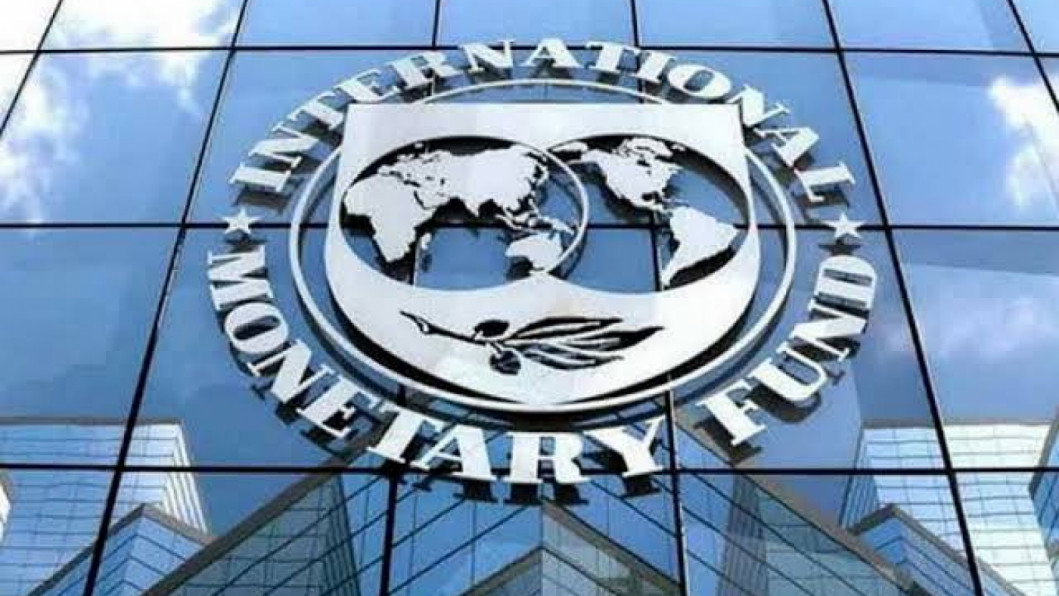
Second, the country’s economy is in better shape than that of Sri Lanka, and certainly better than that of Greece when it received its first IMF bailout of $146 billion in 2010.
“Other countries received bailouts when they were about to default on their debts. “The country is not,” observes Mobarak. He goes on to say that the government has enough foreign currency reserves to cover its expenses for several months.
The IMF’s loans to the country will almost certainly be conditional on fiscal and monetary reforms. However, painful austerity measures, according to Naeem, are unlikely.
“It really doesn’t require austerity measures like Greece had to go through a decade or so ago,” she says. Finally, the country demonstrates how interconnected the global economy is and how the global slowdown is disproportionately affecting poorer countries. Even “economic miracles” are vulnerable to pain.
“There are things that are simply very difficult to have predicted: the [Ukraine] war, the fuel crisis that has resulted — and the pandemic that we’ve just recovered from,” Naeem says. “Unfortunately, it has all led to Bangladesh experiencing some difficulties.”
edited and proofread by nikita sharma


